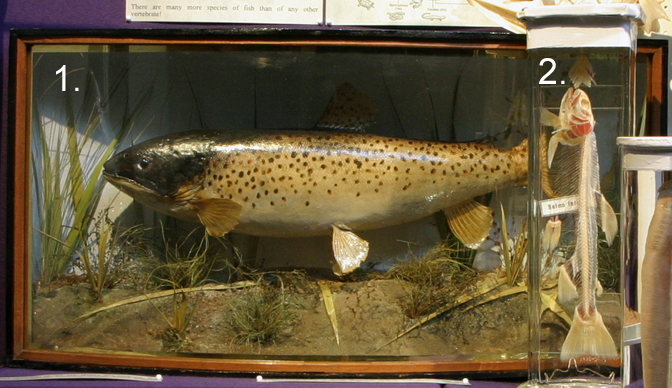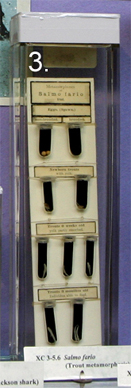
SUPERORDER PROTACANTHOPTERYGII
This superorder contains fish that lack spines and are thought to most resemble the presumed ancestors of the spiny-rayed fish. The 310 species include salmon and trout (order Salmoniformes) and pike (order Esociformes). Salmonids are the dominant fish in the cold water streams and lakes of Europe and North America. They are recognised by their streamlined body, forked tail, adipose fins, axillary processed by the pelvic fins.
 |
 |
 |
1. Mounted trout, Salmo trutta (Order Salmoniformes, Family Salmonidae).
2. Skeleton of trout, Salmo trutta.
3. Development of trout, Salmo trutta. Many salmonids possess a series of distinctive stages during their lives. The adults undertake migrations to spawn in rivers and streams. They lay their eggs in depressions, where the eggs develop into small fish with a yolk sac. The fry emerge from the gravel as the sac is absorbed. As the small active fry grow they develop marks on the side which may last months or years. While some fish populations live in streams, others migrate to the sea or large lakes. The mature adults return to their home streams to spawn.
4. Coregonus clupeoides, the powan. This fish is a fresh water temperate salmonid (family Salmonidae, subfamily Coregoninae) endemic to Loch Lomond, Scotland. This specimen is 30 cm long.






